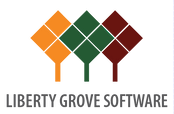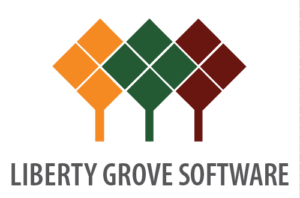Importance of Catch-Weight Management in the Food Industry – And How ERP Can Help Manage It
As a food and beverage industry professional, you’re probably already aware of the term "catch-weight" and the difficulties the idea creates. Suppose you operate in the meat, seafood, or poultry industries. In that case, you are all too familiar with the challenges brought on by the nature of your products and the importance of catch-weight management.

What exactly is catch-weight management, however? And how might enterprise resource planning (ERP) systems help organizations like yours address the issues raised by this challenge?
Here, we'll discuss these issues and why they're crucial.
So, What is Catch-Weight, Anyway?
Catch-weight, commonly referred to as "variable weight," is the precise weight of a single serving of food. The most common use is for goods whose weight varies on a case-by-case basis, like meats, blocks of cheese, fruits, and vegetables.
Weight typically determines the price of these goods (usually bulk sold) rather than specific units of measurement. Think about steaks: the price is based on the weight of the meat, not the quantity of a single steak.
To better clarify the concept, one can consider the situation of two distinct packets of chicken wings. Two packages with the same number of pieces may contain different amounts of chicken as measured by weight since the pieces are uneven in size and form and vary depending on how the chicken is sliced and packaged after slaughter. Therefore, prices the prices of those packages must account for the distinction.
As an intriguing side note, "catch-weight" refers to how fighters are weighed before a battle or match to confirm that both participants are within the weight class range for the event. It is used in boxing and wrestling and is essential for keeping the playing field level in many sports – and preventing injuries.
Why It's Important to Take Catch-Weight Into Account
There are two reasons why companies like yours that produce food need to consider catch-weight management. There is the price issue as well as the client happiness issue.
Pricing
You need to know how much each piece weighs to fairly price a piece of meat or other food product with a varied weight. Applying an "average" weight and price to all items of a particular sort would frequently result in undercharging the seller or the buyer.
Because of this, if you priced all of your fish filets the same, buyers would overpay for those that ran lighter while you wouldn't be recovering the actual cost of those that ran heavier than the average weight utilized. The latter scenario would undoubtedly result in complaints, which brings us to our second argument.
Customer Satisfaction
It’s essential to avoid giving the impression that you would "rip off" a customer in this way if you want to keep people happy and maintain the reputation of your business. The easiest way to ensure the accuracy of your items and their pricing is to transparently account for catch-weight, even going so far as to print the actual weight on the package label to highlight the cause of the price discrepancy.
Some food firms incorporate a buffer for their variable-weight products to ensure that they never run into problems in this area, even though doing so necessitates selling heavier products at a little discount. However, with the right technology, you can reduce or do away with this buffer.
How ERP Solutions Enable a Full Catch-Weight Management System
ERP systems provide various essential catch-weight management functions that aid food firms in managing and pricing their variable-weight items. First, the unified databases that these systems offer make it much simpler to track the weight of your goods and ensure that this number stays associated with the item throughout the supply chain journey.
By synchronizing with connected scales in your facilities, cutting out the possibility of human errors, and relieving your staff of tiresome manual work, cutting-edge ERP platforms can even automate the weighing process. Additionally, once the weight is in the system, a label indicates the price based on the model you define.
Your team can identify anomalies through data captured outside the permissible range for a particular product. For example, a cut just too small to be sold as a pork chop can be taken off that line and used for another. Users can change the tolerance percentages to fine-tune this phase better.

A Single System To Address Catch-Weight Management And Many Other Issues
Foods with different weights can't be sold in packages or as separate items like other goods. Operating in the meat, fish, and poultry segments, not to mention other variable weight items, demands a detailed grasp of catch-weight and how to tackle the challenges it generates.
As mentioned above, relying on technologies created for that purpose is a smarter way to approach catch-weight control at your facilities. You can be confident that your company and the final customer will experience fair results when you put your trust in an ERP system to precisely record the weight of individual products and then take that information into account when pricing the goods.
With all the catch-weight management capabilities you'll need, a modern ERP is jam-packed with other features created with industry best practices in mind. It’s the right foundation for any modernization project or digital transformation, from traceability and food safety compliance to robust profitability analytics that can give your organization a competitive edge.
Ready to take your legacy, on-premises ERP to the Cloud? We’re here to help.
Small to medium-sized food and beverage distributors and producers can stay on top of quickly evolving laws, spot and prevent possible supply chain disruptions, and more with the help of Liberty Grove's Dynamics Food ERP. With the reliable technology of Microsoft Dynamics 365 Business Central Cloud ERP, food and beverage businesses can streamline operations to gain a competitive edge.
Reasons a Generic ERP Solution is Insufficient
The food and beverage sector is unique compared to others. It's essential to have software that can do the following when managing products with a short shelf life:
- Control expiration dates
- Control date selection
- Create a flexible manufacturing schedule
- Track every product (where and when products were produced and by whom)
- Observe constantly evolving regulations
- Quality Assurance
- Container control
- Catch-Weight management
Manufacturers are trying to address these issues with more complex ERP settings, which leads to isolated systems that are challenging to maintain and don't integrate well.
The Experienced Liberty Grove Team Is The Answer
We use the most powerful technology on the market to create a streamlined, wholly integrated Cloud ERP solution designed specifically to address the difficulties facing the food and beverage sectors. With years of production and distribution experience, the Liberty Grove team is well-equipped to ensure that your products reach your clients securely and safely while also adhering to stringent supply chain regulations.
About the author
Liberty Grove Software is an established Microsoft Partner that focuses on providing customers with sales, service, and support for Microsoft Dynamics 365 Business Central/NAV solutions and training and upgrades.
Over the course of more than 25 years, Liberty Grove has assisted hundreds of customers with businesses ranging from small to mid-sized to Microsoft Partners in implementing, training, customization, and upgrading Microsoft Dynamics ERP solutions.
The organization is one of only a few companies worldwide that Microsoft recognizes as qualified to provide Business Central/NAV Upgrade Service Centers.
Related Reading:
Digital Transformation Benefits in the Food & Beverage Industry: Part 1 - Liberty Grove Software
Digital Transformation in the Food & Beverage Industry: Part 2 - Liberty Grove Software
Best 10 Reasons to Move Your On-Premises ERP to the Cloud - Liberty Grove Software

